The Adventures of Scamper the Penguin
7.2 /10 1 Votes
70% Rotten Tomatoes Genre Animation, Adventure, Family Duration Country Japan
Soviet Union | 7.3/10 IMDb Music director Masahito Maruyama | |||||||||||||||||||||||||||||||||
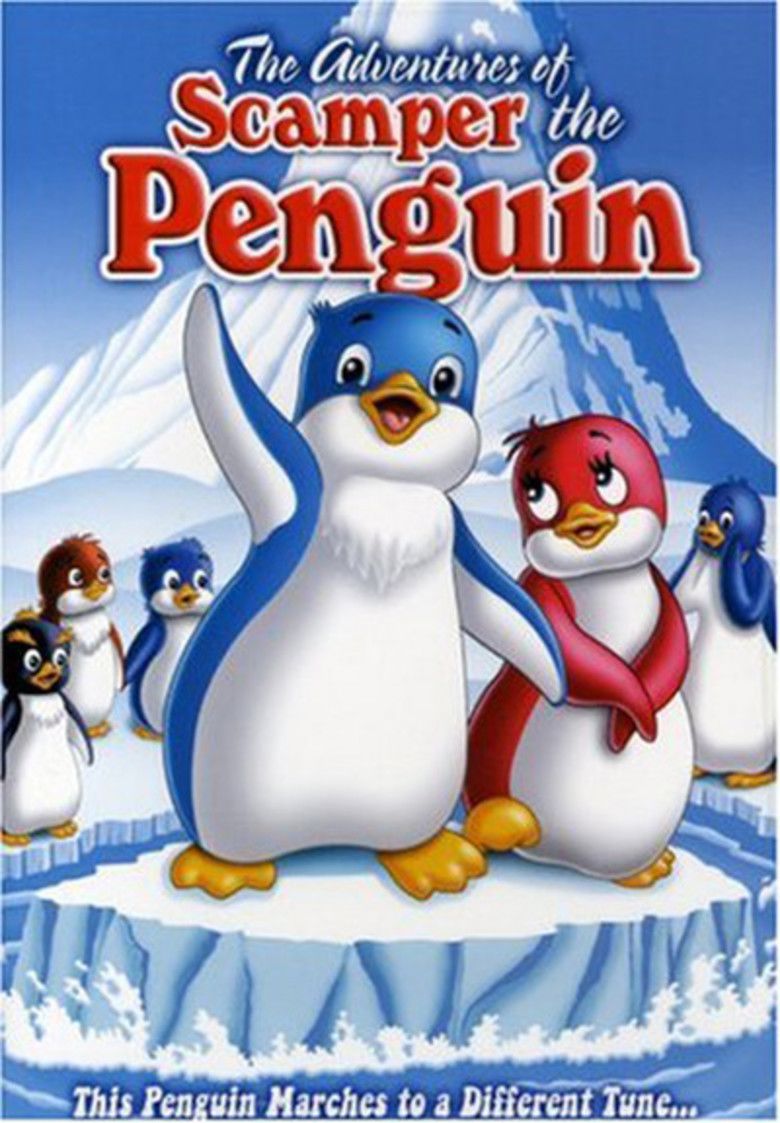 | ||||||||||||||||||||||||||||||||||
Language Original: Russian, Japanese. Dubs: French, Estonian, English, Czech, Lithuanian, Finnish, Bulgarian, Danish, German, Polish, Portuguese, Serbian, Swedish, Dutch, Arabic, Hungarian. Director Kinjiro Yoshida
Gennady Sokolskiy Writer Victor Merezhko , Eiichi Tachi , Shozo Matsuda Release date 1 January 1986 (1986-01-01) (Russia)
27 March 1987 (1987-03-27) (Japan)
August USA (USA-1988) Initial release January 1, 1986 (Soviet Union) Directors Kenji Yoshida, Gennadiy Sokolskiy Screenplay Victor Merezhko, Shozo Matsuda, Eiichi Taji Cast Rolan Bykov (Toto), Yelena Sanayeva (Lala), Vyacheslav Nevinny (Grandfather Pigo), Aleksey Batalov (Narrator), Nikolai Grabbe Similar movies The Pebble and the Penguin (1995), Happy Feet (2006), Penguins of Madagascar (2014), Happy Feet Two (2011), Madagascar (2005) Tagline This Penguin Marches to a Different Tune. | ||||||||||||||||||||||||||||||||||
Two young penguins curiosity about their world leads to encounters with humans and other denizens of the Antarctic.
Contents
- Plot
- Production
- Titles
- English version
- American English version
- UK Re release
- French
- Estonian
- German
- Dutch
- Russian
- Japanese
- References
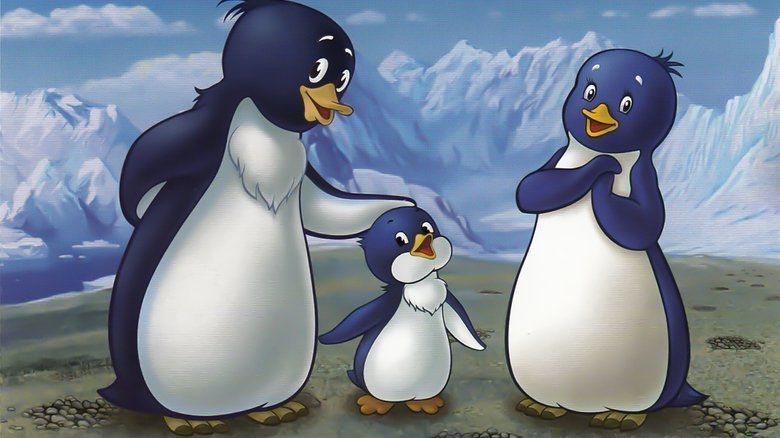
The Adventures of Scamper the Penguin is a film that was released by Enoki Films, and rereleased by Just for Kids and Feature Films for Families. It is sourced from a film from 1986–1987 (it was originally released as a three-part serial) The Adventures of Small Penguin Lolo (original title). The film was co-production between Japan and Soviet Union. It is an animated feature film about the early life of an Adelie Penguin.
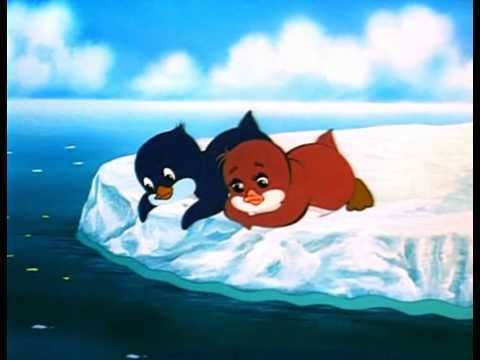
The film is targeted at a very young audience, although the movie is narrated like a documentary about the life of the penguins during the spring and summer seasons in the Antarctic.
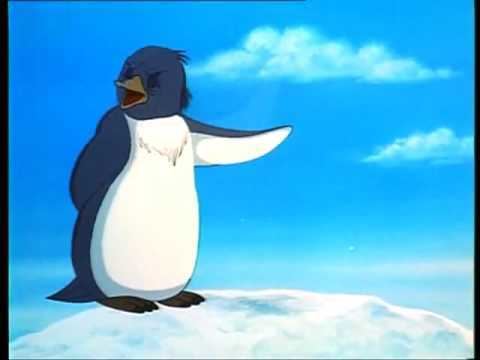
Scamper is a little penguin who loves wandering around the Artic where he lives with his parents. Unfortunately his little adventures tend to get he, and his friend Snowflake into trouble, especially when he disobeys his father and goes exploring with seagulls who want to eat him flying above, and men and dogs on the ground with them. One day the adventure goes too far and they float out to sea, only to be caught by men who want to sell them to the zoo. Scamper, Snowflake and their new friend, a macaroni penguin named Louie, must escape and get back to their families to warn them.
Plot

The story begins with the end of winter, and the southern ocean showing the aurora australis. A flock of penguins, coming from the north, returns home. The females separate from their mates to go hunt as males build their nests from piles of pebbles. The females return to lay their eggs, only to eventually separate from the males again, whilst the males take care of the eggs. It would be 40 days before the females returned. A flock of aggressive seagulls constantly threatens to steal the penguin eggs and raids the nesting grounds while the females are away. Unfortunately, The hunger and all that the good food that was waiting made some of the male penguins abandon their nest. A father (black and white penguin) of a couple saves the egg of another family, meanwhile one of their two eggs is stolen from their nest. When the mother (a dark blue and white penguin) returns, the father says that one of the eggs is not theirs. They return anothers egg and have one egg for themselves.
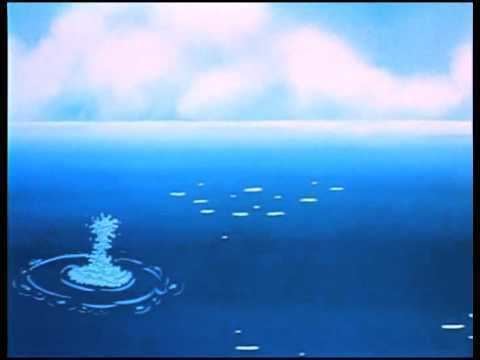
When the eggs finally hatch, the egg that is kept hatches into a blue and white male penguin named Scamper (or Lolo). He meets a pink and white female penguin. One day, he runs away from his nest. He climbs a hill and reaches the top. A pair of seagulls attack Scamper, but a helicopter blows them away, seriously injuring the seagulls themselves. Scamper also encounters a husky named Cowboy (Don) . He and his owner, Carlos the scientist return Scamper home, but he ends up in dead meat with Gilbert (Toto).
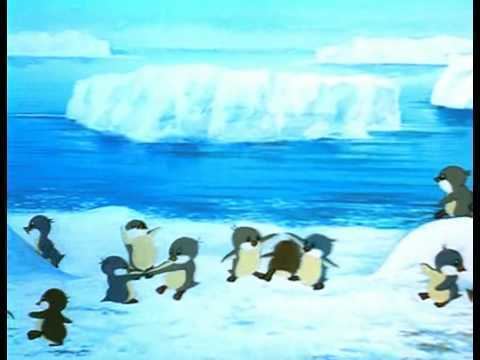
Soon enough, the penguins attend school. The students are educated by a wise, old grandfather-figure penguin named Mr. Feather (originally Pigo) that is black and white. They have a physical fitness coach originally named Nini who is also blue and white. The teacher and the coach bear a resemblance to Scampers (Lolos) parents. The teacher educates them about an elephant seal. While the seal yawns, the teacher observes and describes its mouth. Once the seal finishes yawning, it chomps on the teachers head, but he is released unharmed.
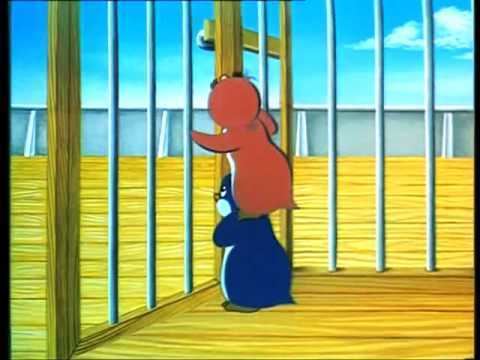
The physical fitness coach teaches the young penguins how to slide. Much later, she will teach them how to swim. She must stay alert because the penguins cannot swim yet, as the water is too cold.
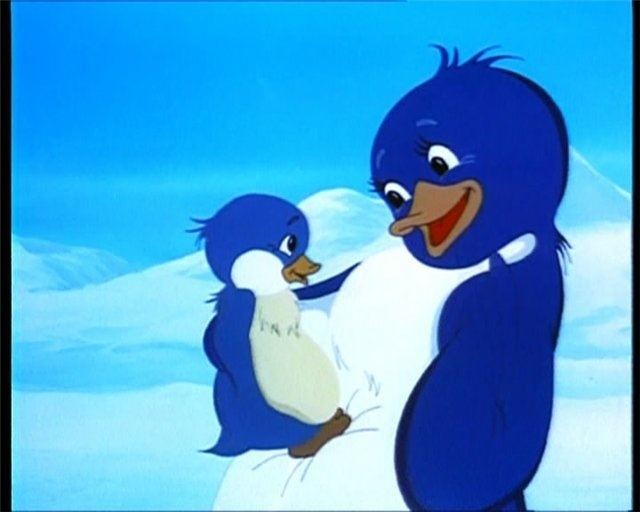
Scamper (Lolo), like any other young penguin, is over-inquisitive and very curious. This irritates the adults because they do not have any answers. Furthermore, he wanders off often, and gets in trouble with his father.
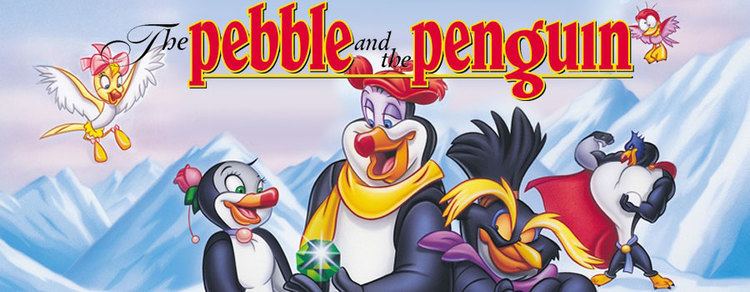
In one of his adventures, he meets a dog, a husky named Cowboy (Don) and his human guardian, who are on a scientific expedition. Momentarily he decides to with his best friend Snowflake (Pepe), escape again. Scamper (Lolo) introduces Snowflake (Pepe) to Cowboy (Don), but Scamper (Lolo) is attacked again by an seagull. The seagull swoops down to try to get back Lolo, but Cowboy (Don) grabs the seagull and throws it to death. The scientist heals Scamper (Lolo)s wounds.
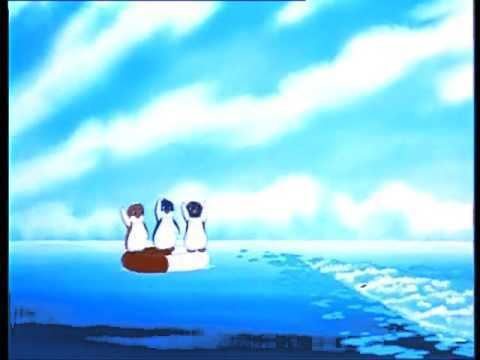
Later, the two penguins crash towards the water (but land on a block of ice). They are stranded on the ice because they still cannot swim. Once they mature, they would grow more feathers to insulate from the water, but they are still too young. They are unable to call for help, and they cannot find any food to eat. They find a group of xenophobic Emperor Penguins, which ignore their cries for help. They are attacked by a leopard seal, who is attacked itself by an orca. The orca ignores the penguins, who are now on a much smaller block of ice.
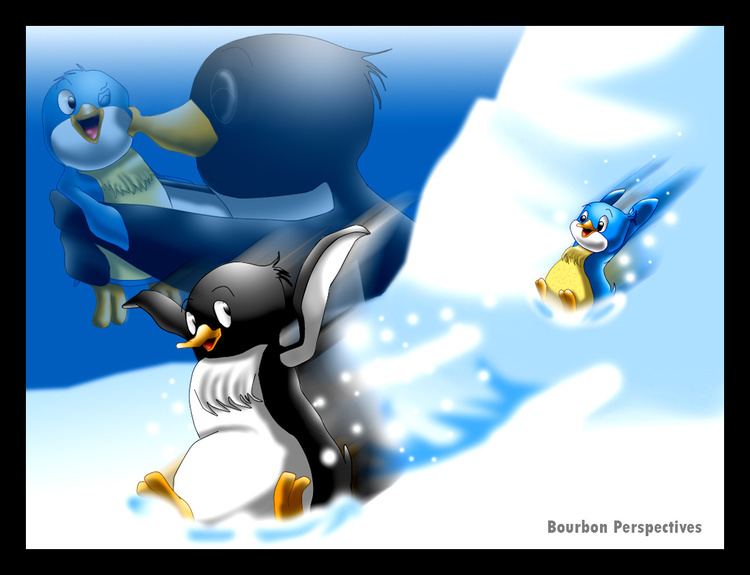
The two penguins are rescued by the crew of a ship. The penguins think that the crew is of gentle scientists, but are mistaken. The men are poachers and they throw the penguins into a cage. They have a neighbor, who is a male, black feathered, macaroni penguin. They also attempt to befriend another dog, a Saint Bernard.
Once they escape, they eat a disc-shaped food. They are chased by the poachers. The Saint Bernard howls, and the crew of the ship take cover because they think there is a storm approaching. The Saint Bernard gives them a life saver which they float onto another block of ice. They have grown now, and can swim and eat.
Once the penguins return home. The coach (Nini) alerts the rest of the community that the students have been captured in a net. Scampers (Lolos) father leads a rescue. The poachers end up caught in a tidal wave which was caused by their gunshots echoing.
The story ends as the dark winter comes, and the penguins go northward again, now led by Scamper (Lolo). Louie (Mak), the macaroni penguin later decides to find his own community.
Production
The original film was created by Takeo Nisiguti who had sought a co-production with Russian animation. He contacted them in 1980 and took several years to develop. During this time, Russian animation received film equipment commonly used in Japan. It is the first time Russian and Japanese production had collaborated to make an animated film.
It was then animated in 1986 by Soyuzmultfilm. It was co-produced by Soyuzmultflm and Lifework Corporation with music by Masahito Maruyama. It was sponsored by Aist Corporation and Sovinfilm. English versions of Lolo were distributed by Force Entertainment. The "Scamper" version was released by Enoki Films USA. A French dub was produced by Agovision and distributed by Arkeion Films.
Additional dubs of Lolo were made in Estonian, Czech, Lithuanian, and Finnish.
Additional dubs of Scamper were made in German, Swedish, Portuguese, Danish, Bulgarian, and Serbian.
Additional Dubs of both versions were made in these languages: French, Arabic, Hungarian, and Polish.
Another version called Pim De Pinguin was released in Dutch.
Titles
The Japanese title of the film is Chiisana Pengin Roro no Boken () and Russian is "" (Priklyucheniya pingvinyonka Lolo), both literally translate as The Adventures of Small Penguin Lolo. Apart from language, the Russian and Japanese versions are identical.
Other languages were released:
English version
In addition censored and other changes of the American version was created by another, albeit a very little-known dubbing into English («The Adventures of Lolo the Penguin»), formed in the Soviet studio "Film-export", although it is sometimes erroneously considered to be made in the UK. In this version of the trilogy it was just duplicated in English, but the script, character names, soundtrack and visuals are not subjected to any alteration, and remained in their original form. The division into three cartoon series and intermediate titles between the series have also been preserved. Titles in this version have been completely replaced by English, but kept the original style and font, but became much less detailed and only mentioned a few of the key figures. In this transliteration of the names of the creators of the cartoon into English in these credits is different from the American version (E. Tati, V. Merezhko, G. Sokolsky, K. Yasaida). The author of the English text in them is named Nikolai Kurnakov No other information about the team, dubbing these titles do not contain. In the credits for the year of the first film dubbing in 1987, is credited to the third in 1988.
This film was dubbed into English, with the English script written by Nikolai Kurnakov of Film Export Studios and Sovexportfilm in 1987. A release in Australia is called "The Adventures of Lolo the Penguin", and is an English dub of the film as originally released. This version was distributed in 2005 by Force Entertainment (now called Beyond Home Entertainment).
The Beyond Home Entertainment version uses the original soundtrack and matches the lip sync as well as the original script, but it was edited for time purposes. (Trimming 15 minutes) The three parts of the film were combined into one film, thus deleting the original credits segments. The cast of this English dub is also uncredited.
Deleted scenes:
American English version
The American version was called "The Adventures of Scamper the Penguin". It was edited by Collins Walker, produced by Patricia Curran, and directed by Jim Terry with production company Enoki Films USA. This dub was heavily localized and cuts out most of the violent scenes from the original (as well as non-violent scenes). Among them is
Most scenes with blood are edited, with the exception of Lolos wound from being abducted by an seagull.
The poachers are "zoo keepers", and the frames where Toto (and three other penguins) was shot and killed are deleted entirely. Totos absence is not explained and the films conclusion is rushed.
All of the characters names are changed. Among them, is
Narrations were made by a man. For "Scamper", they were made by a woman. Additional dialogue is added which includes expressive mumbling, and saying "hi" when waving, whether or not their mouths are open. And many dialogs are very far from the original.
A new soundtrack was made for Scamper the Penguin. It was arranged by Mark Mercury (credited as a band named "Bullets"). The music was synthesized instead of orchestrated. In "Lolo", there was only a soundtrack; there were no lyrics. For "Scamper", there were several songs with lyrics added. Example scenes are when the seagull birds attack while the male penguins leave the nest, young penguins sliding for the first time, and escaping from the poachers while on the ship.
The opening segments were replaced to one similar to common American childrens animated television series. A common practice of American dubbing of that time period, the original closing credits segments were deleted and not included in the new closing credits. The replacement closing credits segment is abridged.
The original picture quality contains vivid colors compared to Scamper. This also occurred with dubs that used "Scamper" as the source film. A few frames of Scamper contain modified backgrounds. While many scenes were deleted in the final version of Scamper, frames from other scenes were reused to keep the Scamper film the same approximate length as the Lolo film, and also to add time for the background songs containing lyrics.
UK Re-release
In 2011, Brightspark distributed the American English version under the title: "Tappy Feet - The Adventures of Scamper".
French
The film was dubbed into French in Quebec, Canada which sources the American English dub. It was also dubbed in France which was sourced the original film. The France version made custom edits. Several other dubs were then sourced from the France release.
Estonian
The Estonian dub is a carbon copy of the Russian language release of Lolo The Penguin. The opening production credits are left in Russian with a dub narration of the credits. The glass harmonica music scene is otherwise unedited.
German
The German dub is a carbon copy of Scamper, including the new theme song and credits as well as the new music. Both the theme song and the credits were translated to German. The credits remain abridged. However, several deleted scenes were restored into the film:
Dutch
The Dutch version is known as Pim de Pinguin and contains a completely different theme, soundtrack, and sound effects.
Russian
Japanese
French
Additional Voices:
Dutch
References
The Adventures of Scamper the Penguin WikipediaThe Adventures of Scamper the Penguin IMDbThe Adventures of Scamper the Penguin Rotten TomatoesThe Adventures of Scamper the Penguin themoviedb.org
